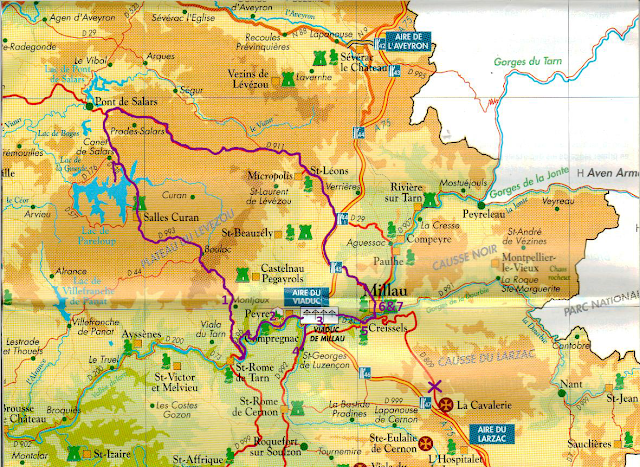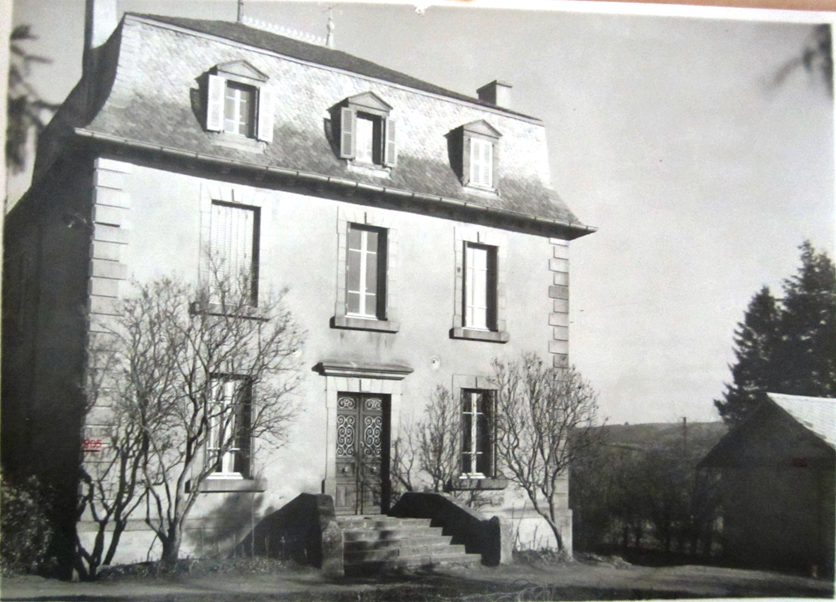03/2013 - NATURE EN AVEYRON (2)
La flore omniprésente
Au sud de l'Aveyron, sur les terres arides du Larzac, on retrouve à la fois des
paysages de garrigue et de montagne. Vous y verrez le symbole du causse,
les cheveux d’anges. Saurez-vous discerner les 45 espèces d’orchidées
(150 sont répertoriées en France) dont la rare ophrys de l’Aveyron que
l’on admire mais ne cueille pas ! Faisons le zoom sur la magnifique Cardabelle, porte bonheur et protecteur des paysans. Sechée, elle est accrochée aux portes des maisons de certains villages. Ce chardon sert de baromètre :
la plante se referme à l'approche du mauvais temps. Autrefois, on mangeait son cœur comestible et sa racine était considérée comme
remède contre de nombreux maux et maladies.
Au
nord de l'Aveyron, sur les plateaux de l’Aubrac, les champs se réveillent au
printemps après avoir vécu plusieurs mois sous la neige. Ce sont alors
des tapis jaunes de crocus et jonquilles qui émergent. Puis, viennent
les gentianes que l’on apprécie lors de l’apéritif et le thé d’Aubrac
qui parfume infusions et alcools. Les amateurs de botaniques seront
conquis avec plus de 2 000 espèces végétales à observer !
Ophrys
The omnipresent flora
In the South of Aveyron, on the arid land of the Causse du Larzac you can take in the moutain scenery as well as the garrigue scenery.
Here you will see the Causse symbol all around, called angels' hair. Additionally, there are 45 species of orchids out of 150 existing in France, including the rare Aveyron Ophrys which you can admire, but which you must not pick! Let's zoom in for a close-up of the magnificent cardabelle or golden thistle. Farmers believed this flower brought protection and good luck. That is why up until today they hang them on their doors. This might be due to the Cardabelle's barometer caracteristic: it closes when the weather is getting bad. In addition, the heart of this flower used to be eaten and its roots were considered a remedy for illness.
In the North of Aveyron, on the Aubrac plateau, the fields come back to live during Spring after having spent several months under a snow coat. The snow makes way to yellow carpets of crocuses and daffodils, which are closely followed by the gentians. These blue flowers are used for the produce of Aubrac tea and flavours infusions and liquors. One thing is sure: botanical lovers who visit Aveyron will be delighted at the prospect of more than 2000 plant species to see!
Here you will see the Causse symbol all around, called angels' hair. Additionally, there are 45 species of orchids out of 150 existing in France, including the rare Aveyron Ophrys which you can admire, but which you must not pick! Let's zoom in for a close-up of the magnificent cardabelle or golden thistle. Farmers believed this flower brought protection and good luck. That is why up until today they hang them on their doors. This might be due to the Cardabelle's barometer caracteristic: it closes when the weather is getting bad. In addition, the heart of this flower used to be eaten and its roots were considered a remedy for illness.
In the North of Aveyron, on the Aubrac plateau, the fields come back to live during Spring after having spent several months under a snow coat. The snow makes way to yellow carpets of crocuses and daffodils, which are closely followed by the gentians. These blue flowers are used for the produce of Aubrac tea and flavours infusions and liquors. One thing is sure: botanical lovers who visit Aveyron will be delighted at the prospect of more than 2000 plant species to see!
In Aveyron, is de natuur alomtegenwoordig en de flora weerspiegelt de
verscheidenheid van het land.
In het zuiden, op het dorre land van de Causse du Larzac, vindt men zowel landschappen met struiken als berglandschappen. Hier groeit overal engelenhaar, het symbool van de Causse. Er groeien ook nog eens 45 orchideesoorten van de 150 die in Frankrijk bestaan, waaronder de zeldzame Ophrys van Aveyron die u kan bewonderen maar zeker niet mag plukken. En de prachtige cardabelle, de gouden distel, is een nadere blik waard. Gedroogd wordt de distel aan de duur gehangen om te beschermen en geluk te brengen. De plant heeft een bijzondere eigenschap: als het weer slecht wordt, gaat ze toe. Het hart van de Cardabelle is eetbaar en de wortels worden beschouwd als een remedie tegen wondes en ziektes.
In het noorden, op het plateau van Aubrac, ontwaken de velden in het voorjaar na enkele maanden onder de sneeuw te hebben geleefd. De sneeuw maakt plaats voor meterslange gele tapijten van krokussen en narcissen. Kort daarop toont ook de Gentiane zijn kleuren. Deze blauwe bloemen worden gebruikt voor het produceren van Aubrac thee en als smaakgever voor infusies en likeuren. Een ding staat vast: Bloemen- en plantenliefhebbers kunnen hier zo'n 2000 plantsoorten bewonderen!
Source: http://www.tourisme-aveyron.com/
In het zuiden, op het dorre land van de Causse du Larzac, vindt men zowel landschappen met struiken als berglandschappen. Hier groeit overal engelenhaar, het symbool van de Causse. Er groeien ook nog eens 45 orchideesoorten van de 150 die in Frankrijk bestaan, waaronder de zeldzame Ophrys van Aveyron die u kan bewonderen maar zeker niet mag plukken. En de prachtige cardabelle, de gouden distel, is een nadere blik waard. Gedroogd wordt de distel aan de duur gehangen om te beschermen en geluk te brengen. De plant heeft een bijzondere eigenschap: als het weer slecht wordt, gaat ze toe. Het hart van de Cardabelle is eetbaar en de wortels worden beschouwd als een remedie tegen wondes en ziektes.
In het noorden, op het plateau van Aubrac, ontwaken de velden in het voorjaar na enkele maanden onder de sneeuw te hebben geleefd. De sneeuw maakt plaats voor meterslange gele tapijten van krokussen en narcissen. Kort daarop toont ook de Gentiane zijn kleuren. Deze blauwe bloemen worden gebruikt voor het produceren van Aubrac thee en als smaakgever voor infusies en likeuren. Een ding staat vast: Bloemen- en plantenliefhebbers kunnen hier zo'n 2000 plantsoorten bewonderen!
Source: http://www.tourisme-aveyron.com/
.jpg)



Commentaires